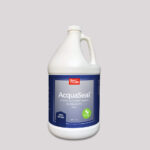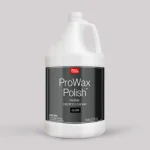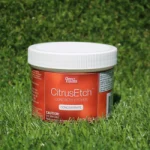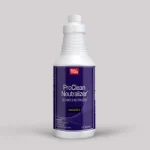Stained Concrete Basement Floor Ideas & DIY Transformations
Turning a plain basement into a usable, stylish space? Check out real stained concrete basement floor projects from DIYers who transformed bare concrete into durable, low-maintenance living areas. See before, during, and after photos, plus helpful tips to inspire your own basement makeover!
By Justin Richardson
DIY Basement Makeover: Staining Concrete Floors on a Budget
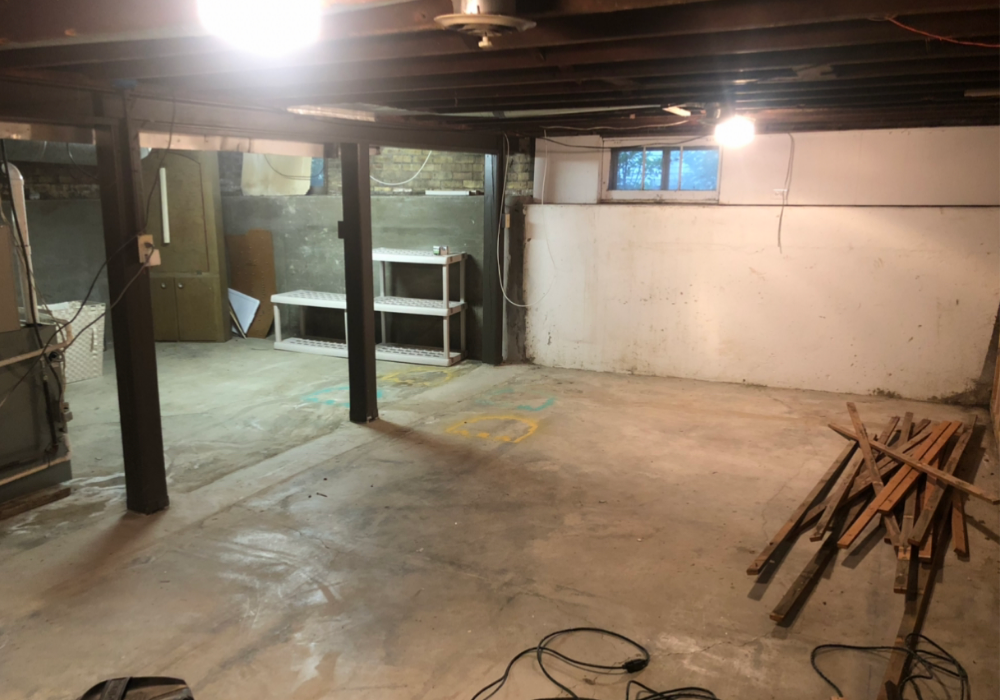
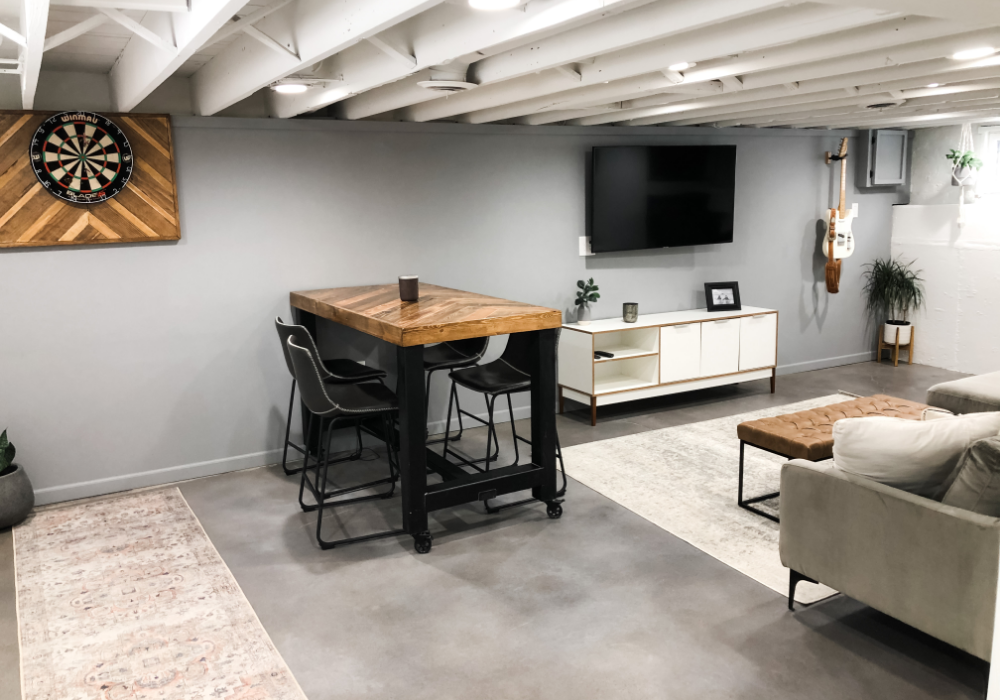
This couple wanted to transform their 100-year-old basement into a livable space without the high cost of hiring professionals. Their floor had old stains, spray paint, and overspray, so they rented a concrete grinder to create a clean slate. After patching minor cracks, they used Vibrance™ Dye in Charcoal, White, and Stormy Gray to achieve a modern, polished look.
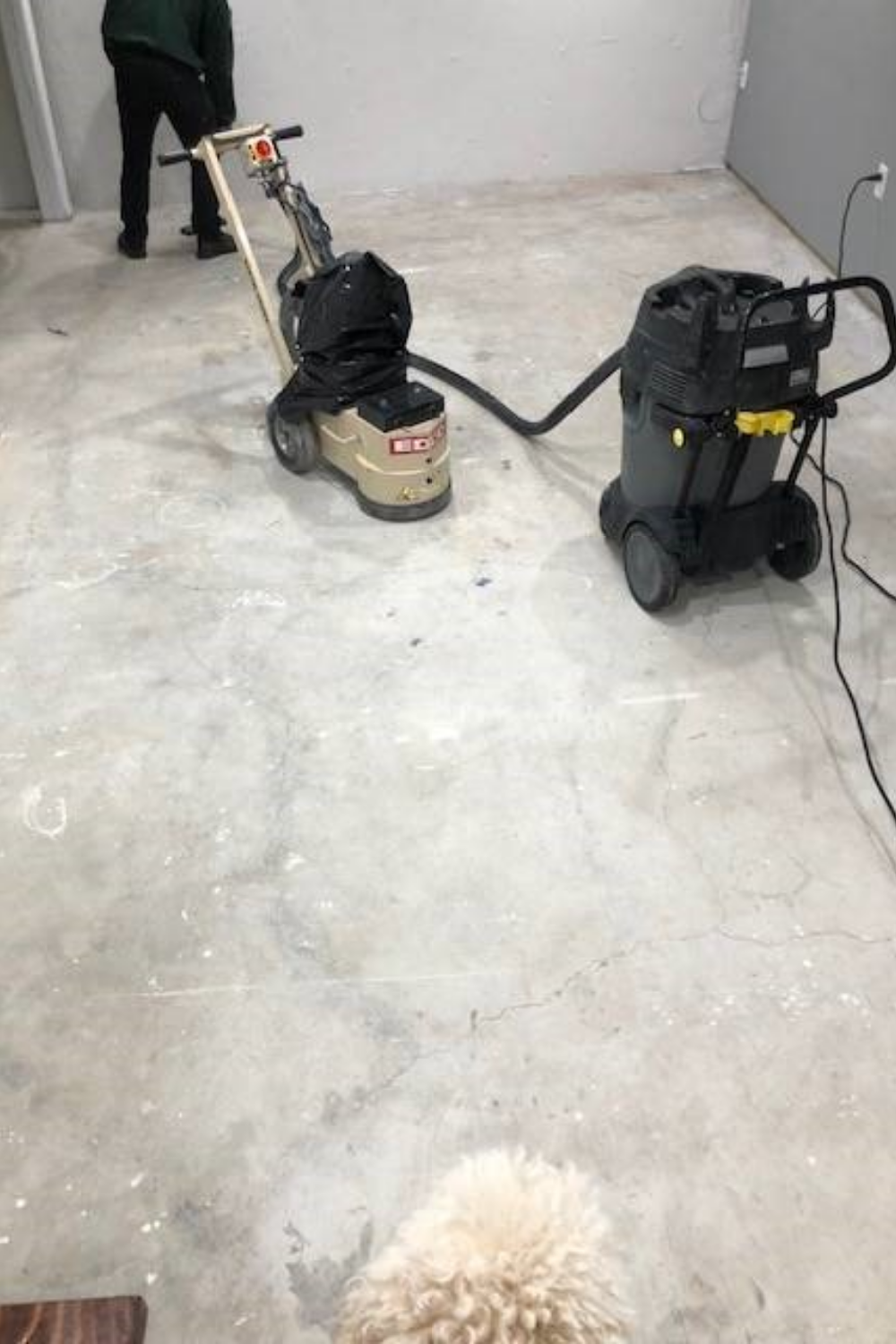
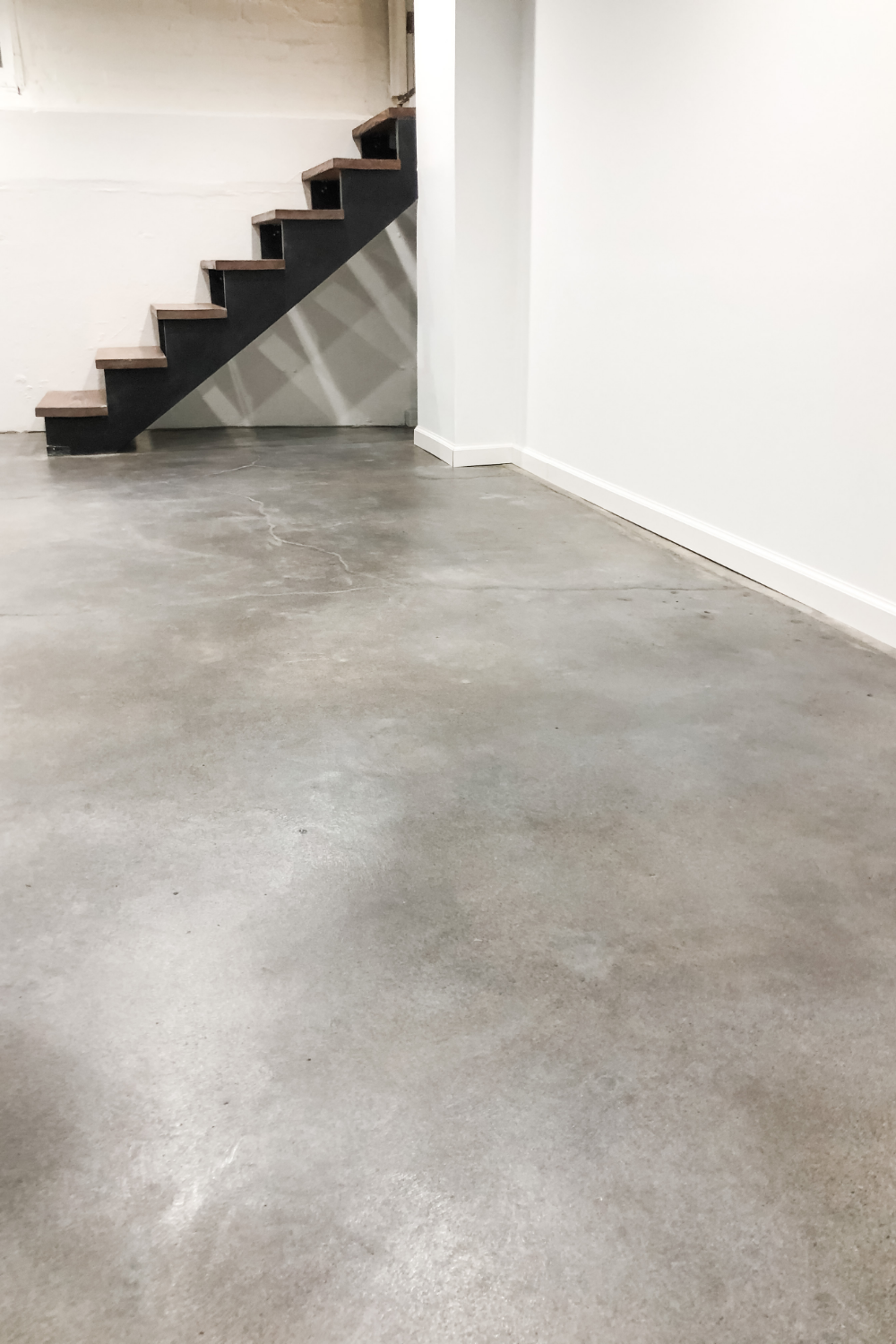
With support from Direct Colors, they tackled this project themselves and couldn’t be happier with the results! If you’re looking for step-by-step guidance on staining your own concrete floors, check out our detailed How to Apply Concrete Dye guide.
Blending Rustic Charm with Contemporary Design
This couple embraced the beauty of raw concrete, turning their basement into a modern, polished space with ColorWave® Molasses stain and AcquaSeal™ satin sealer. The result? A durable, stylish finish with rich, natural color variations—no need for carpet or tile!
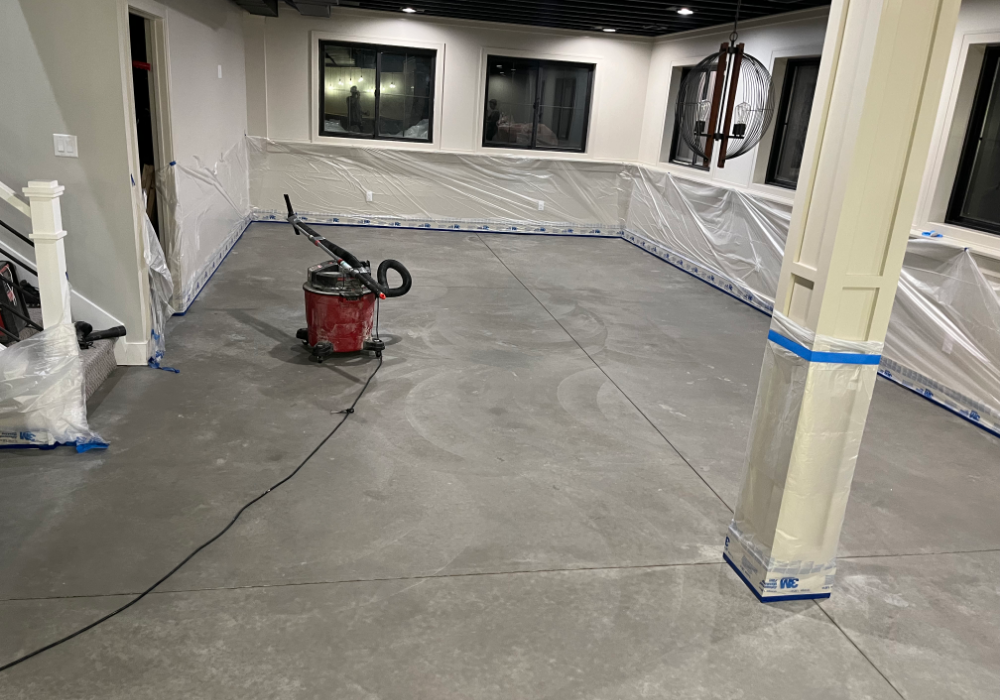
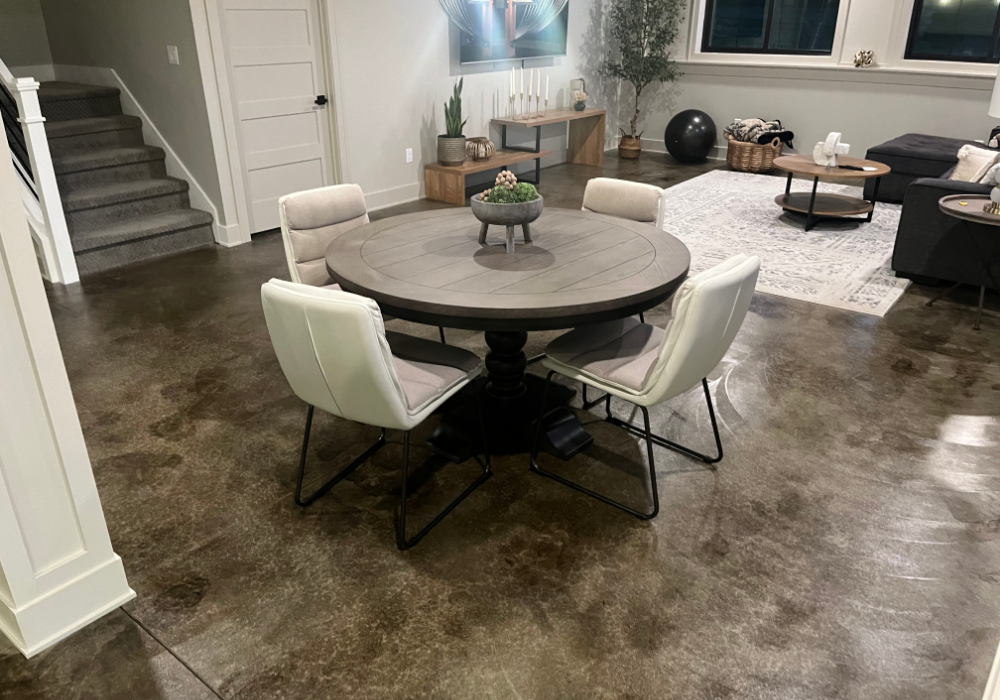
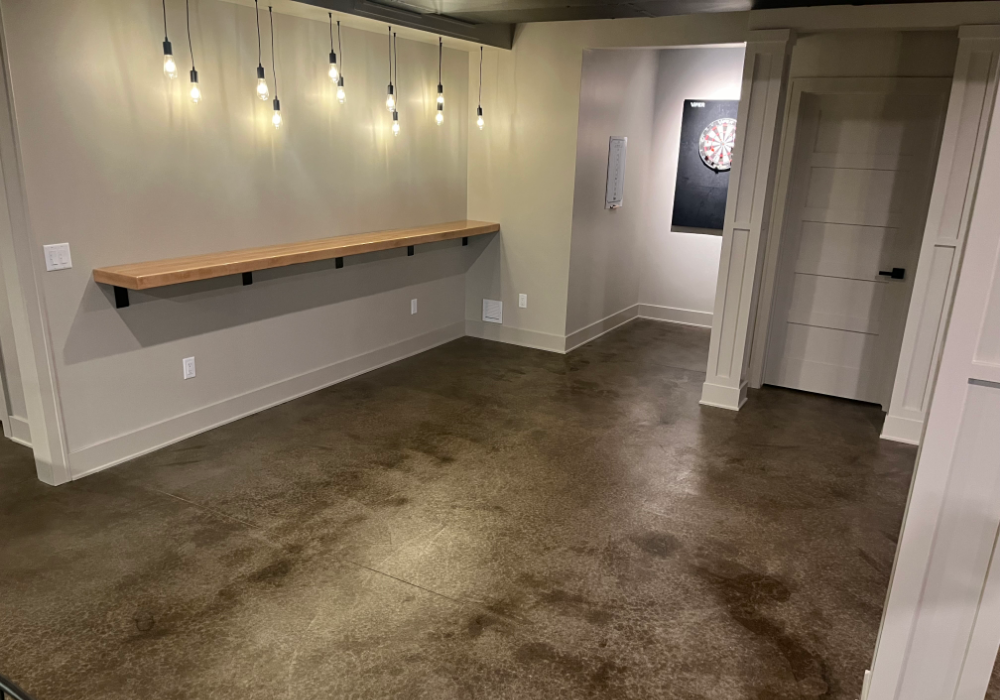
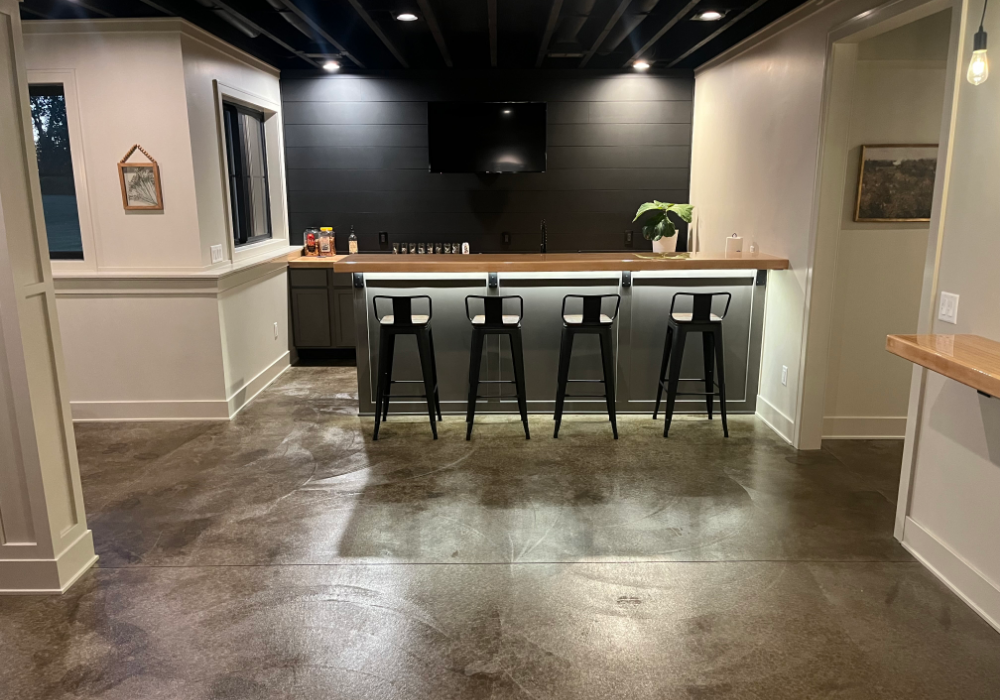
Project Info:
- Project Completed In: 5 day(s)
- Estimate of Square Footage: 1500 sq. ft.
- Project Description:
We wanted to finish our basement with a unique style. So my wife and I decided to utilize the new concrete as the finished floor using a stain and sealer. - Personal Tips:
The cleaning process is the most tedious and time consuming, but it is the most important part.Make sure you are using compatible products for removing stains or paint from the floor to avoid any potential issues between DC products and cleaners.Lastly, follow the directions and do not cut corners. - Direct Colors Products Used:
1 Qt. ProClean Degreaser™ Concentrate
5 Gal. Molasses ColorWave® & AcquaSeal™ Satin Kit
5 Gal. AcquaSeal™ Satin
5 Gal. ProWax Polish™ Satin
Rustic Whiskey Bar Retreat in the Basement
This customer transformed a plain basement into a cozy whiskey bar using EverStain™ Malayan Buff for a rich, warm floor finish, sealed with EasySeal™ Satin. The acid stain enhanced the natural character of the concrete, giving the space a classic, timeworn feel that pairs perfectly with the rustic decor and deep green walls.
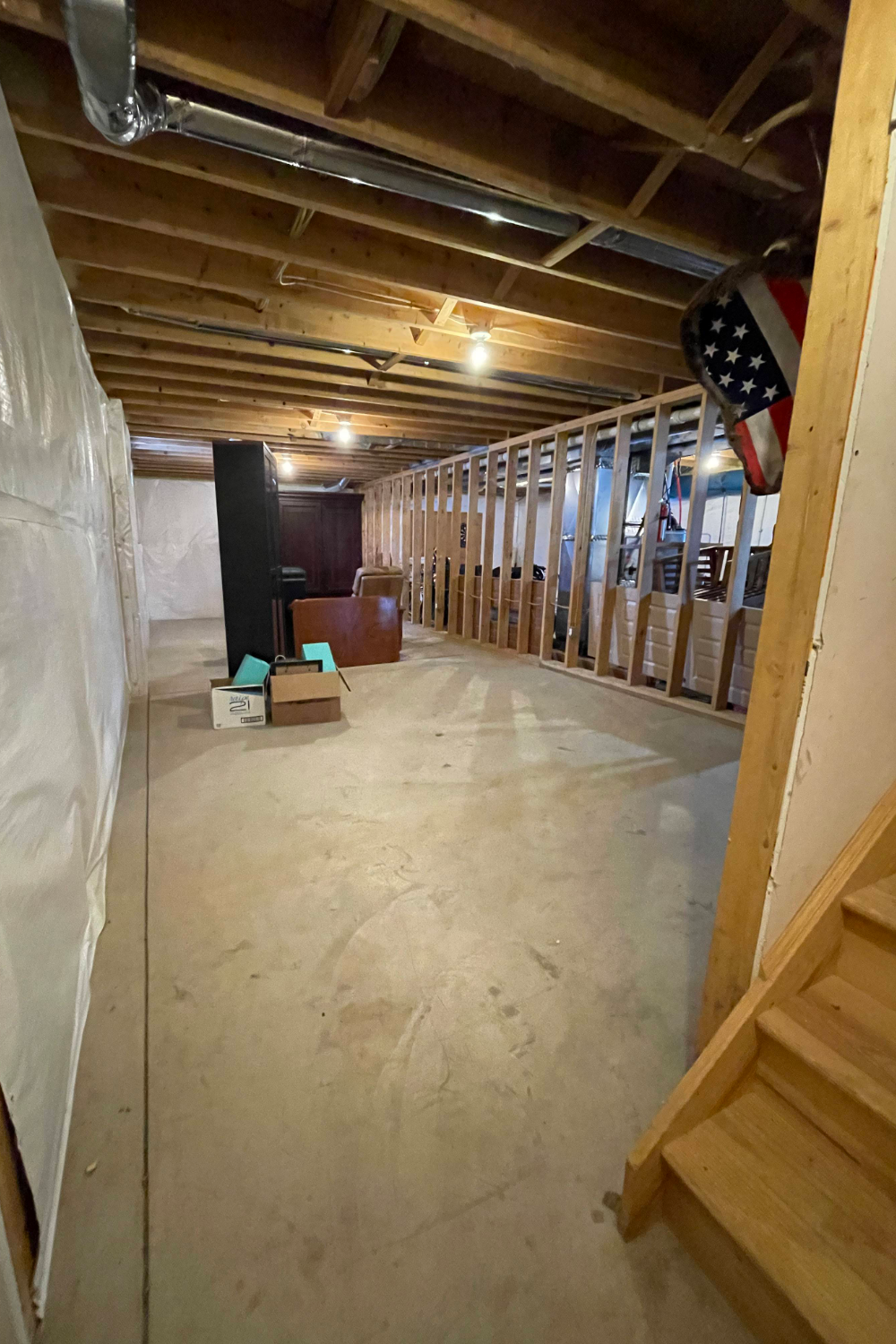
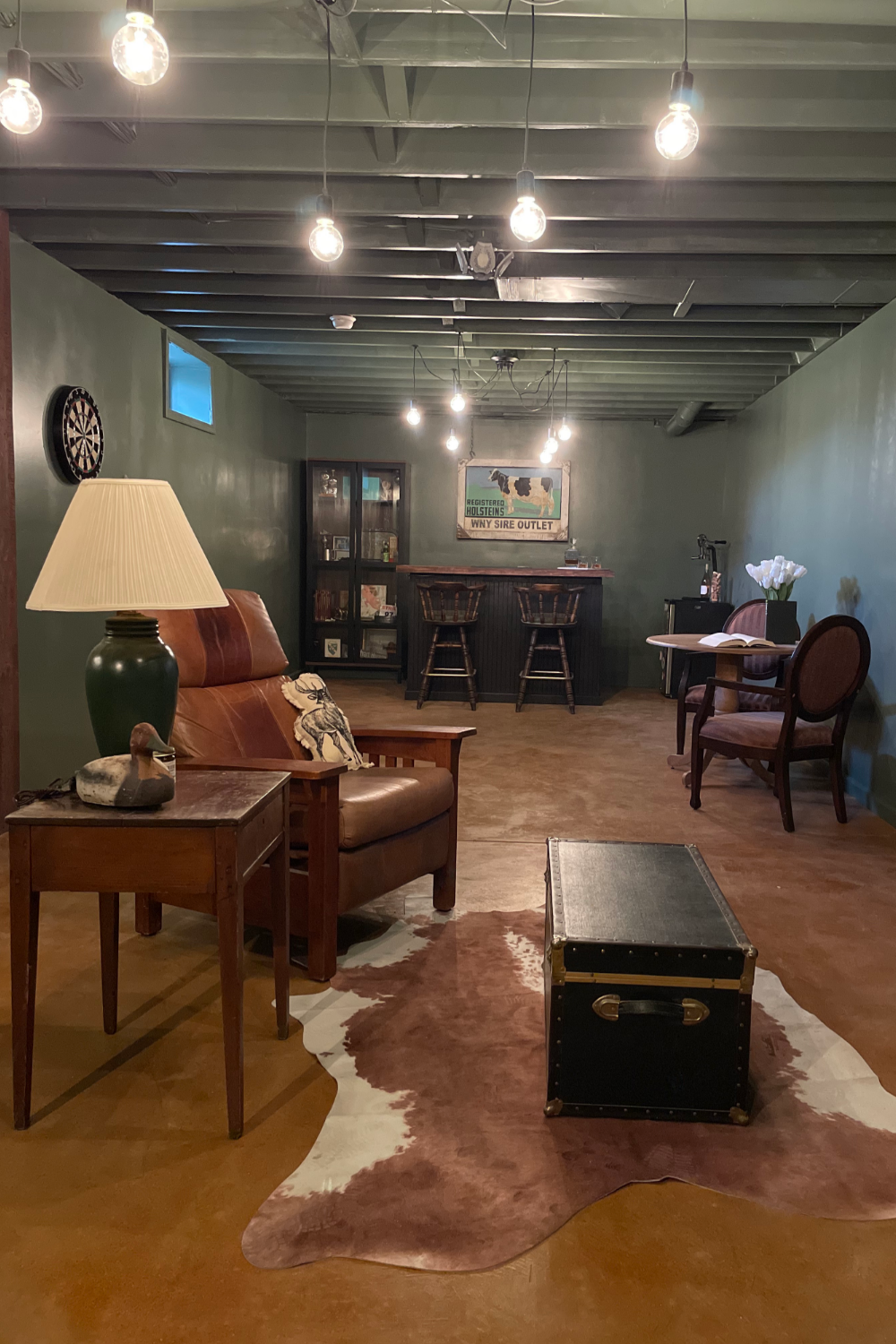
Explore the full project with more photos and details: Malayan Buff Concrete Stain Photo Gallery.
Stylish & Durable Basement Floor Built to Last
This homeowner wanted a marbled look with subtle contrast, experimenting with different AcquaTint™ tinted sealer ratios to get the perfect blend of gray and black. After dialing in the mix to a 3:1 gray-to-black ratio, the floor was sealed with five coats of ProWax Polish™ satin for enhanced durability. The result? A sleek, modern finish that held up against an impromptu hockey game with ten kids! A perfect balance of aesthetics and toughness.
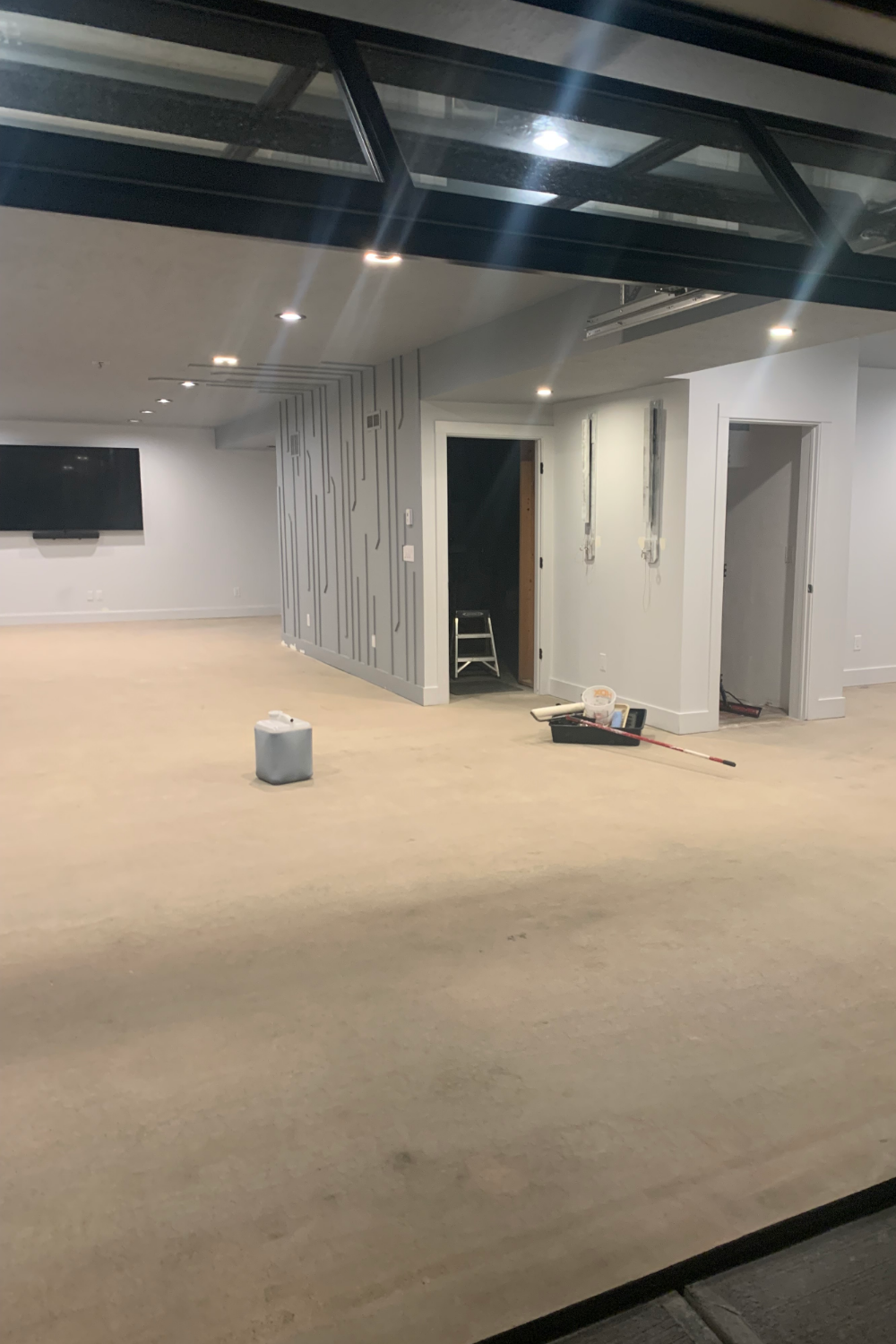
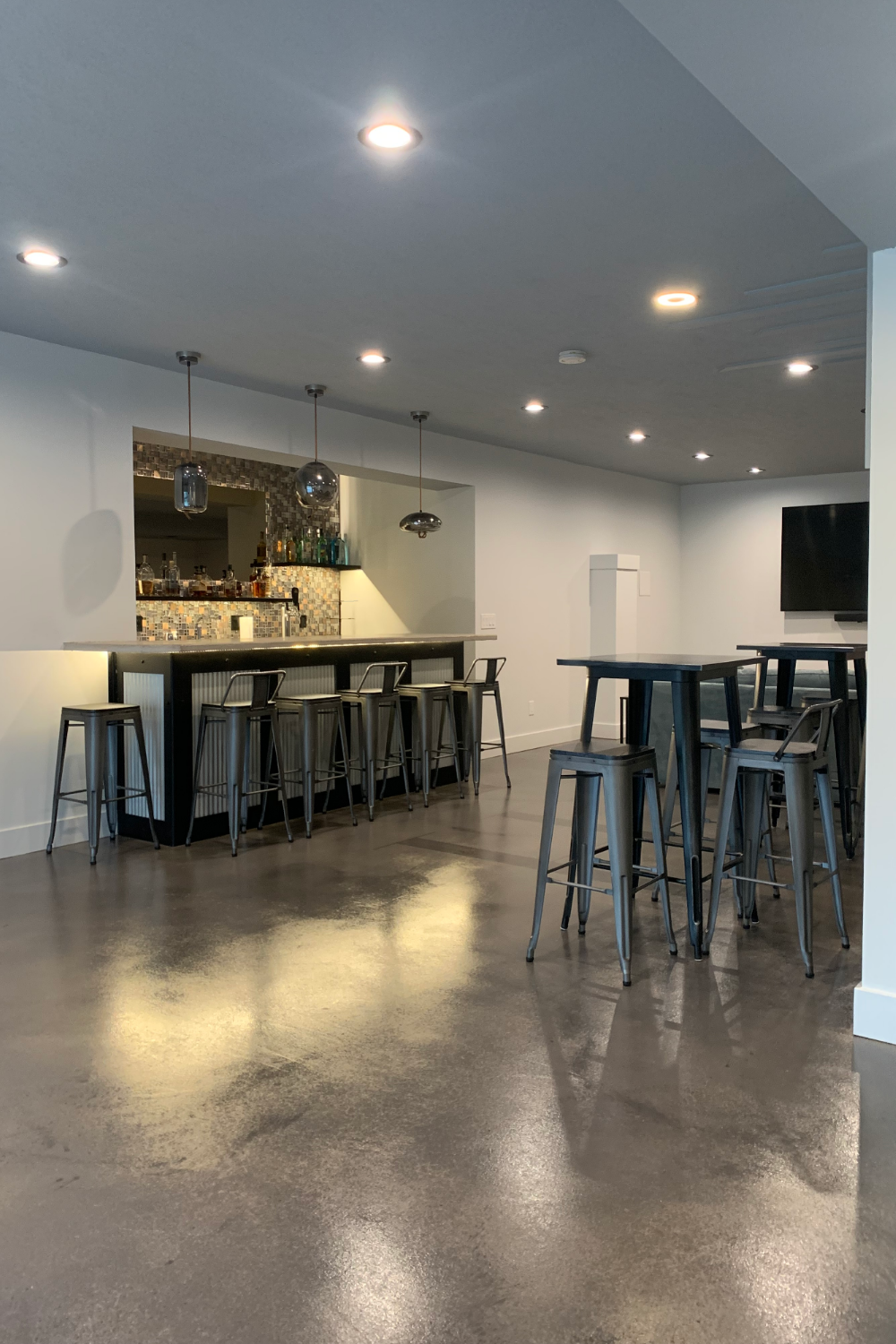

Thanks to Direct Colors products, this basement transformation was a huge success! For more details & inspiration, check out our Black Concrete Photo Gallery.
Rustic Elegance for a Cozy Family Retreat
This DIYer took on the challenge of staining their basement floors before finishing the space, creating a warm and inviting family and rec room. Using EverStain Coffee Brown and Desert Amber, they achieved a beautifully aged, industrial farmhouse look that complements their rustic decor. Encouraged by their success, they’re already planning to stain the second half of their basement in the next phase of their remodel.
If you’re thinking of transforming your basement floor with acid stain, check out this project for inspiration!
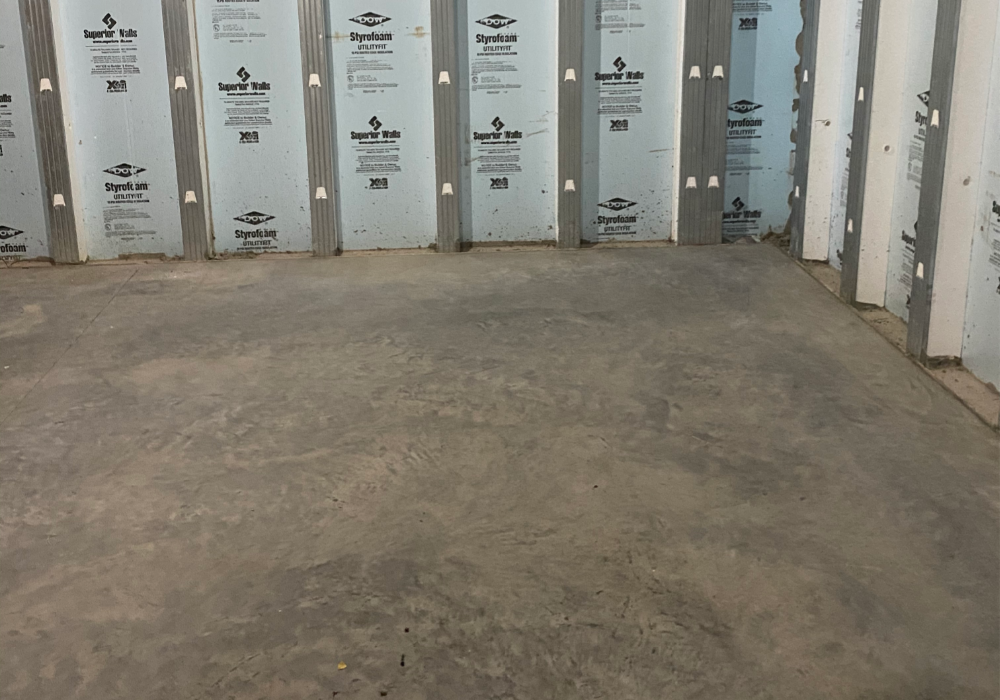
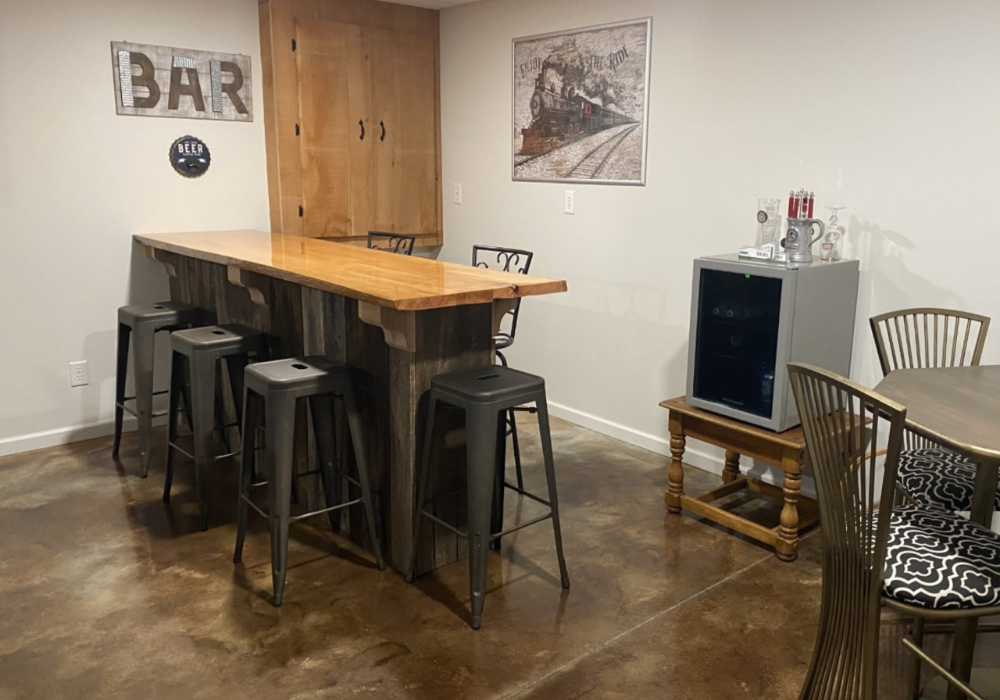
Please be aware that each photo in this gallery showcases projects accomplished with our EverStain™ Acid Stain and is provided by actual customers, serving as a source of inspiration. However, since EverStain™ is semi-transparent, the final appearance of your project will be influenced by the initial color and condition of your concrete surface, and thus, your final results might vary. For the best results, we strongly recommend performing a small test on your specific surface before applying the stain to the entire project to ensure the final look aligns with your expectations.
DIY Hydronic Radiant Flooring Project with Direct Colors: Tips and Tricks for a Beautiful Finish
If you’re thinking about installing a hydronic radiant floor system in your home, you might be wondering what kind of flooring to put on top of it. When we were in this position, we came across Direct Colors while browsing Pinterest and decided to try out their DIY trial kit to help us decide on colors and combinations.
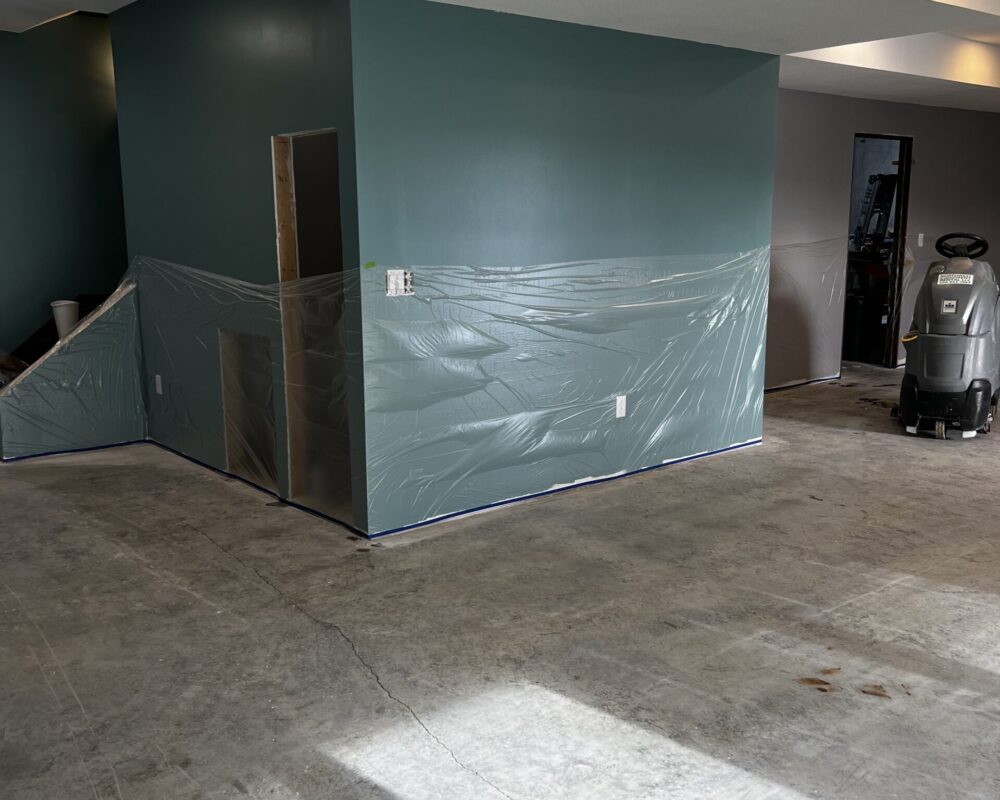

We ended up going with the Everstain DIY kit in Coffee Brown and Desert Amber, along with the Satin Acrylic sealer. The whole project took about 10 days from start to finish, and we were thrilled with the final results.
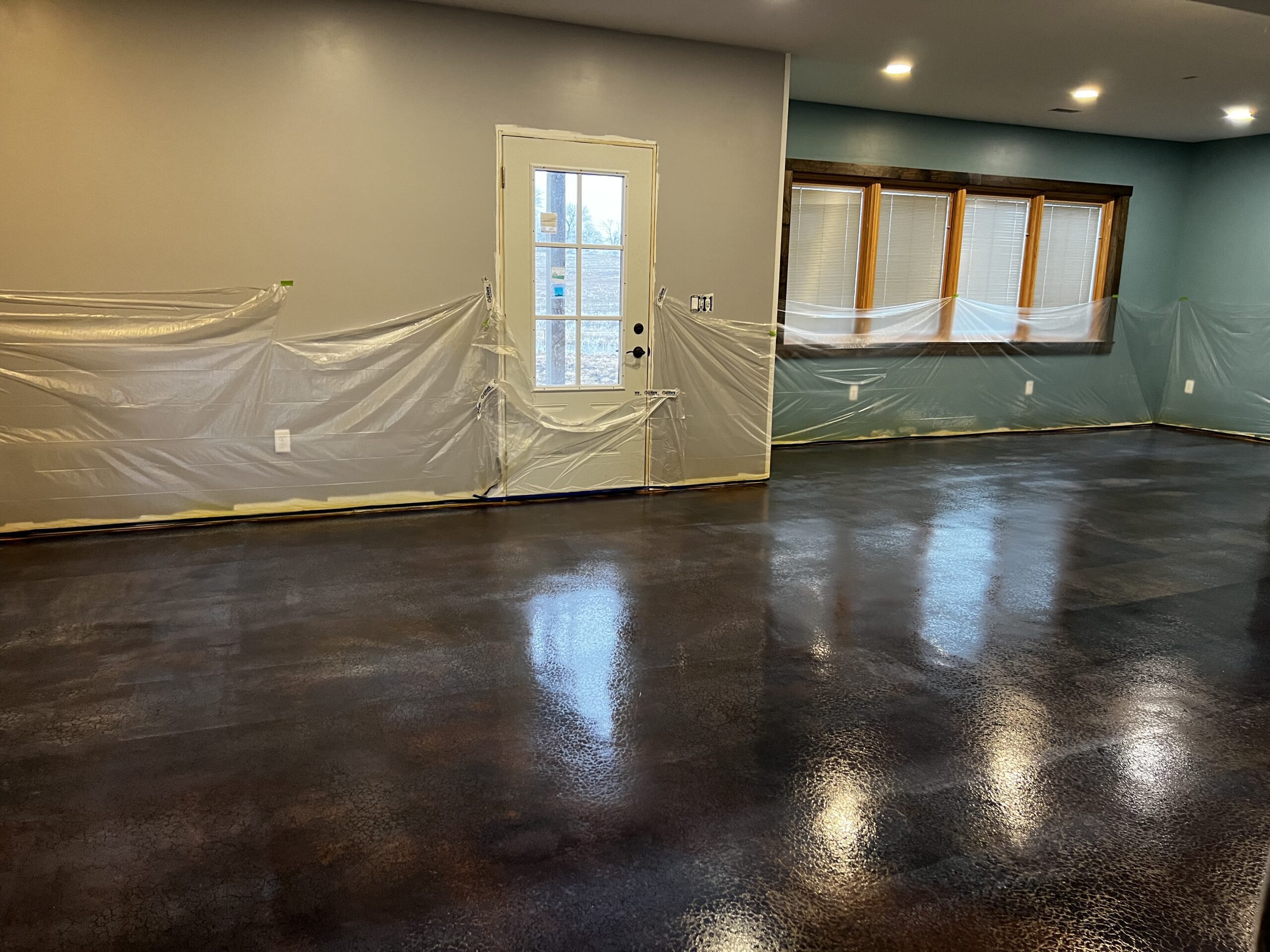
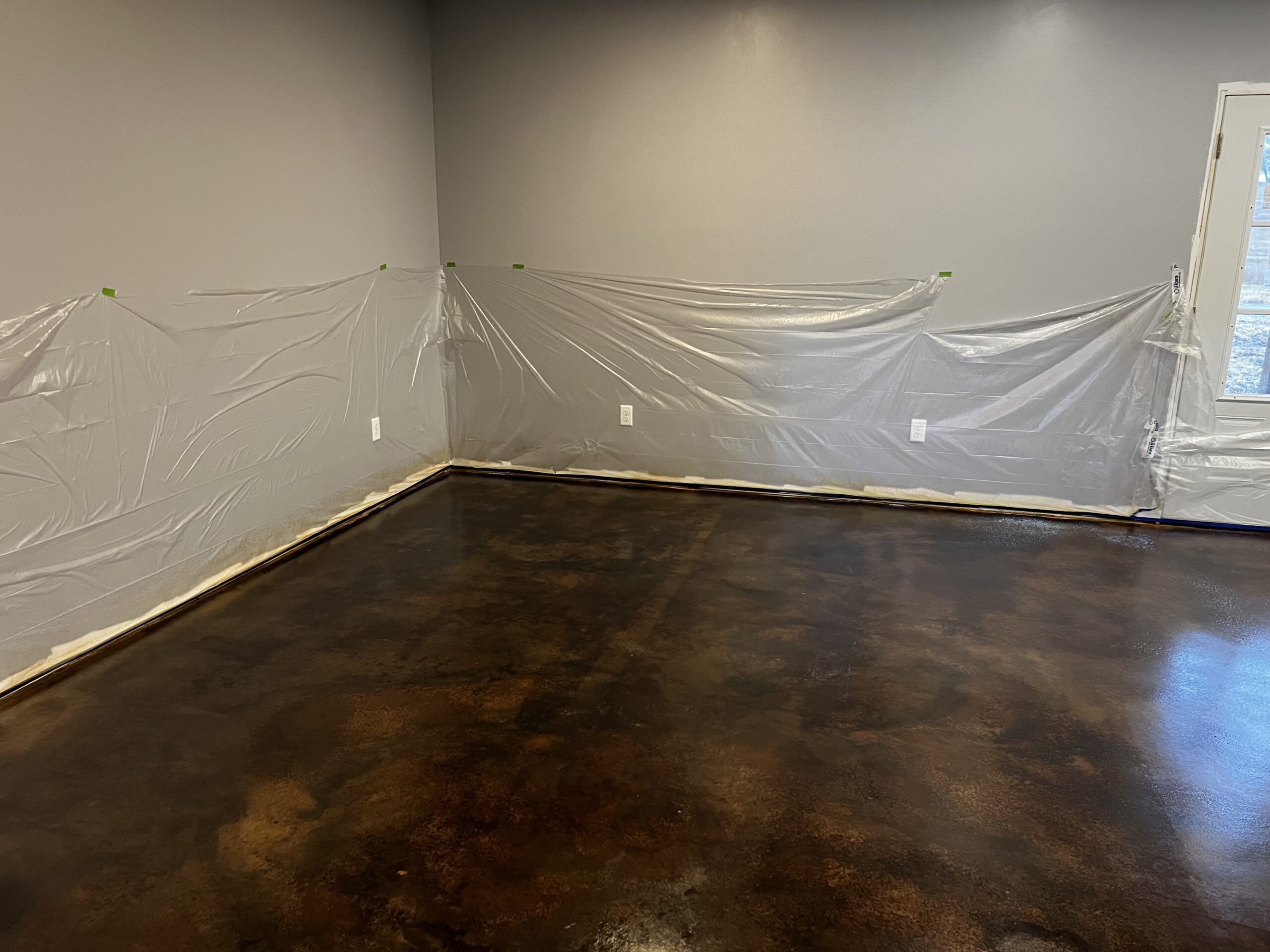
Here are a few tips we learned from our experience:
- We highly recommend doing the DIY trial kit. It was a great way to figure out which colors we needed to achieve the look we wanted and gave us a good understanding of the entire process.
- Make sure to order enough product. We underestimated how much we’d need for the “marbling” effect we were going for using the wet on wet method and ended up having to order an additional gallon of Coffee Brown to finish the floor.
- If you have a large area to clean and prep, consider renting a ride-on floor scrubbing machine. It will save your back and make the job go much faster.
- Don’t expect perfection on a floor that wasn’t perfect to begin with. Our basement had a few rough spots, trowel marks, and a small crack, but we blended these imperfections into our marbling design and they’re now almost impossible to spot.
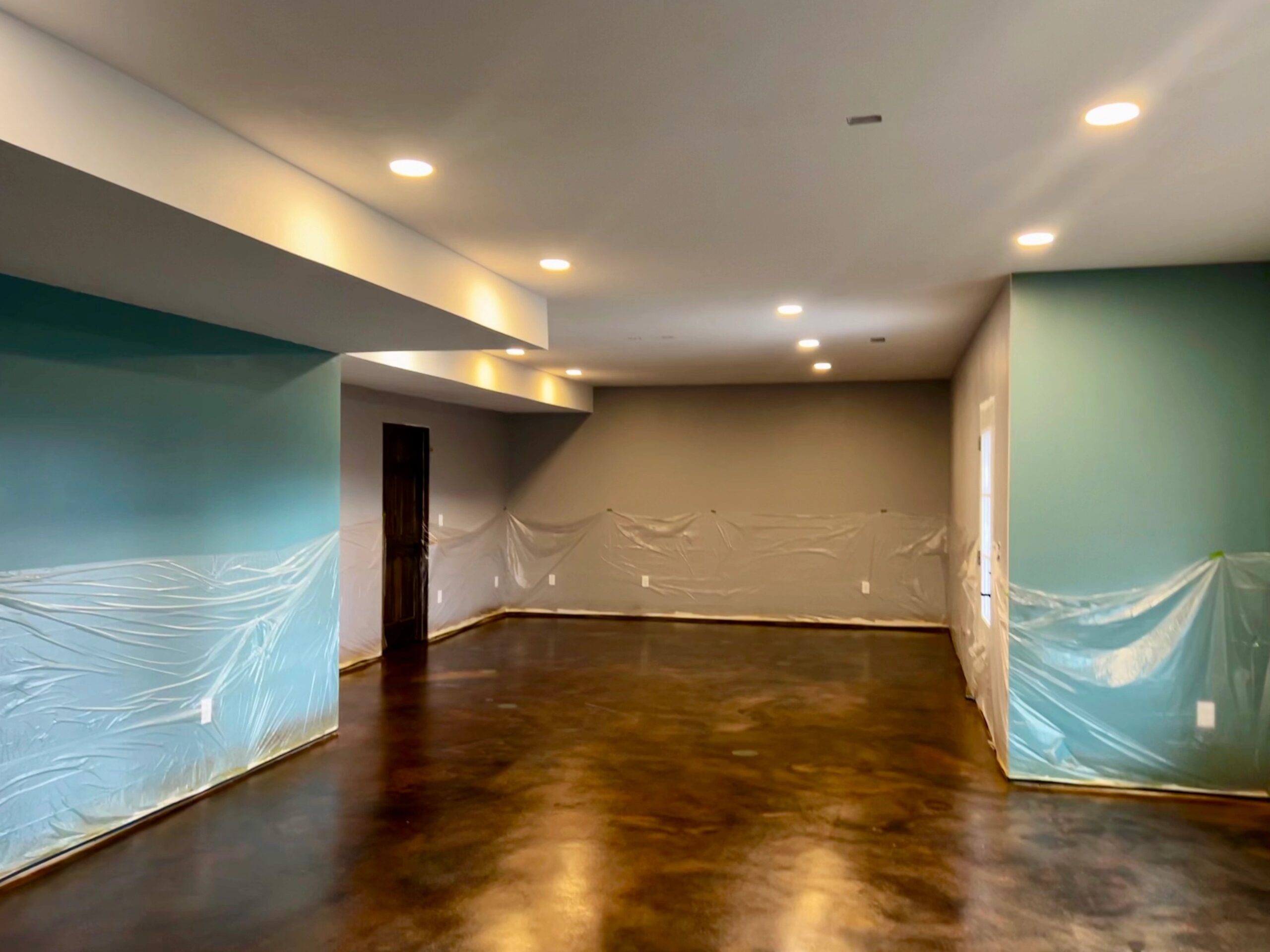
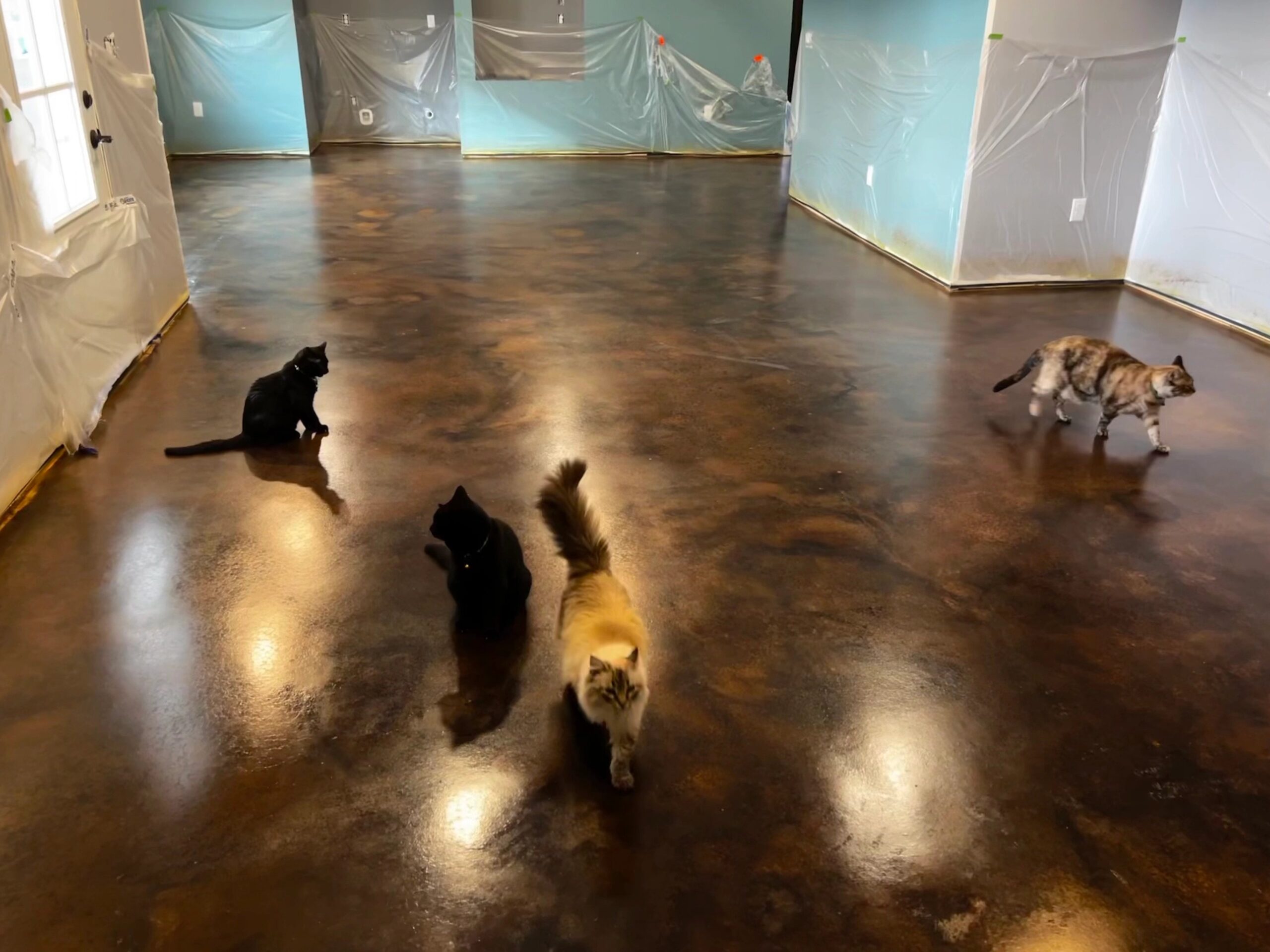
In addition to the products from Direct Colors, we also used Rust oleum 3-in-1 cleaner, degreaser, and etcher to prepare the concrete before applying the acid stain. All in all, we were very happy with the outcome of our project and would definitely recommend Direct Colors to anyone looking to add some color and character to their concrete flooring.
Creating a One-of-a-Kind Art Studio Floor with Direct Colors Acid Stains
The floor was my Canvas: I acid stained approximately 300 square feet of my basement floor for an art studio space. I wanted a floor that would be easy to maintain and clean up, one that makes a statement and is eye catching, and a work of art in itself.
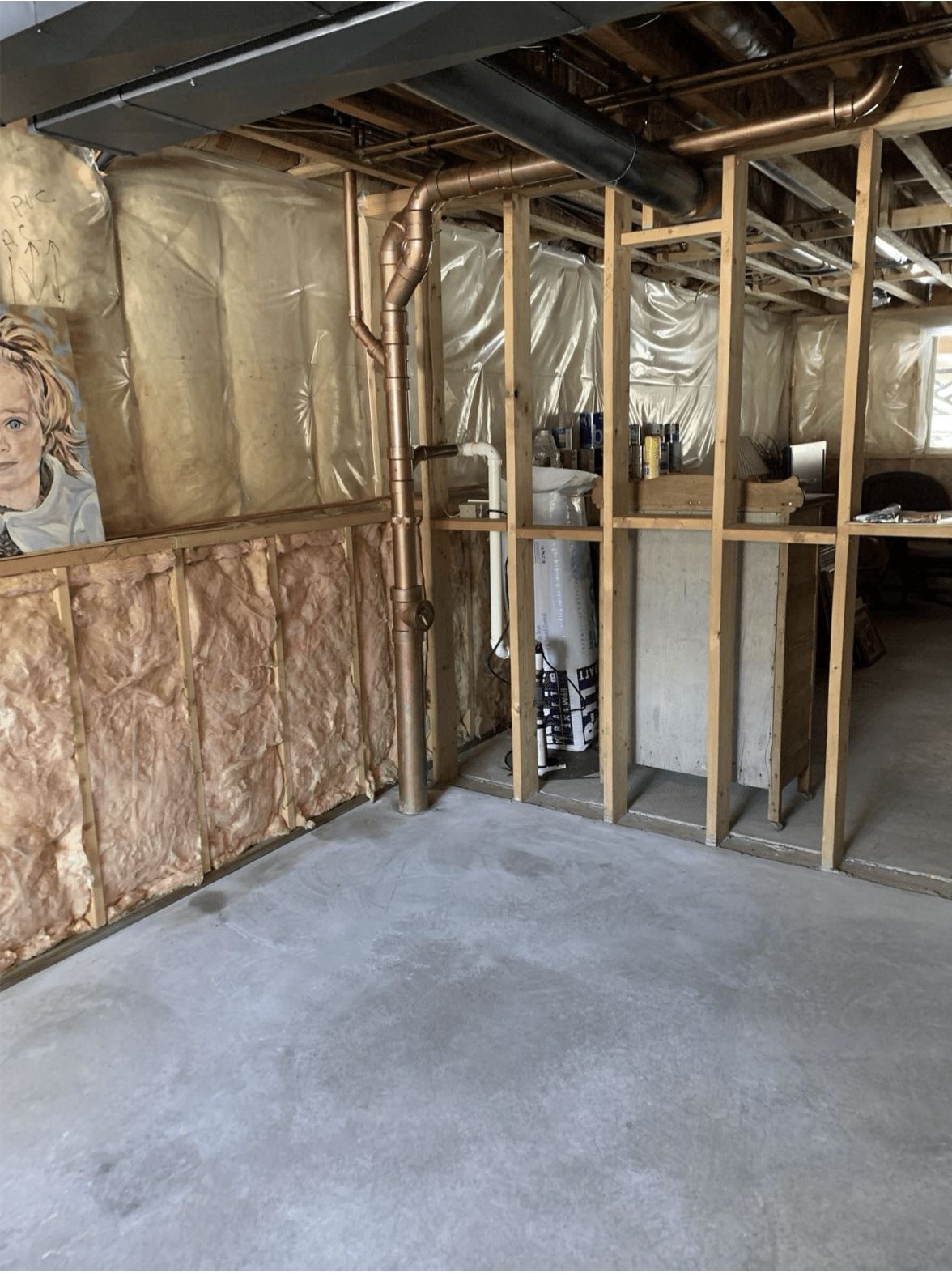
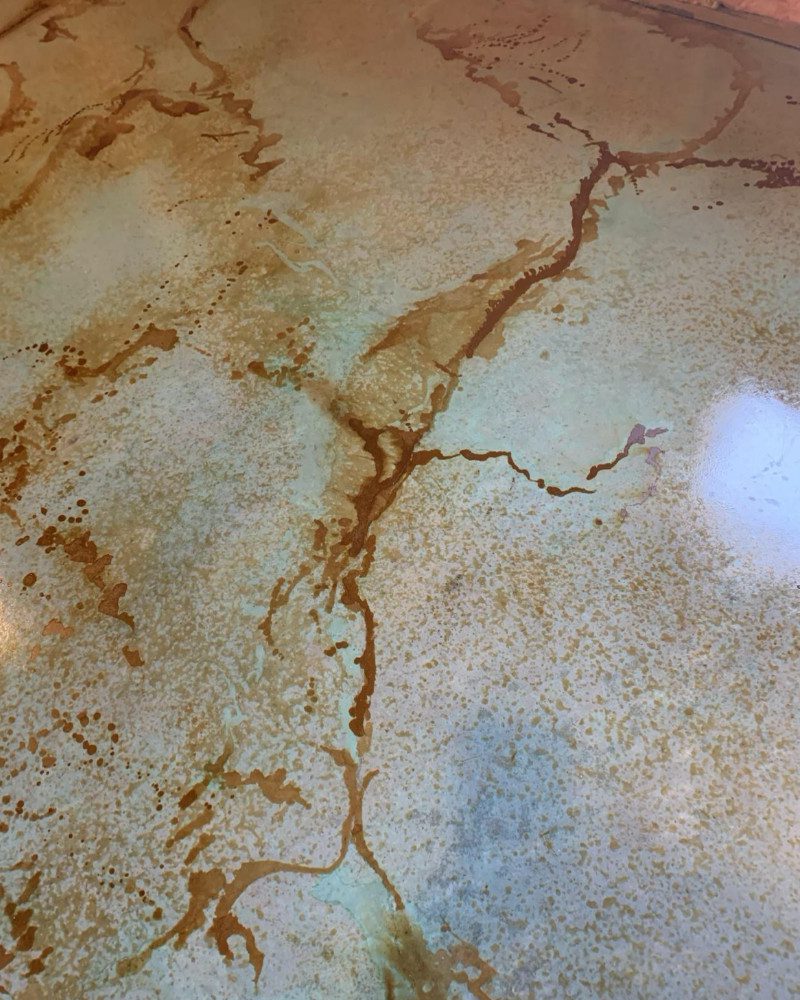
Check out more about this art studio floor.
Pros and Cons of Stained Concrete Basement Floors: Durability, Customizability and Cost-effectiveness vs Cold Surface, Moisture Issues and Noise
Pros of stained concrete basement floor:
- Durable and long-lasting: Concrete is a very durable material and can withstand heavy foot traffic and heavy loads without showing much wear and tear.
- Low maintenance: Stained concrete floors are easy to clean and maintain, and they don’t require much upkeep.
- Customizable: Stained concrete can be colored and stained to match any decor and personal preference, also it can be sealed for a glossy finish or left matte.
- Cost-effective: Stained concrete floors are often less expensive than other flooring options, particularly when compared to natural stone or tile.
Cons of stained concrete basement floor:
- Cold surface: concrete has a tendency to hold in the cold which can make it uncomfortable to walk on during the cold months.
- Moisture issues: concrete can absorb water and moisture, leading to mold and mildew growth if not sealed properly, also it can cause cracking and heaving.
- Noise: The hard surface of concrete can make it quite loud, so it may not be the best option for basements that will be used for living or sleeping spaces.








